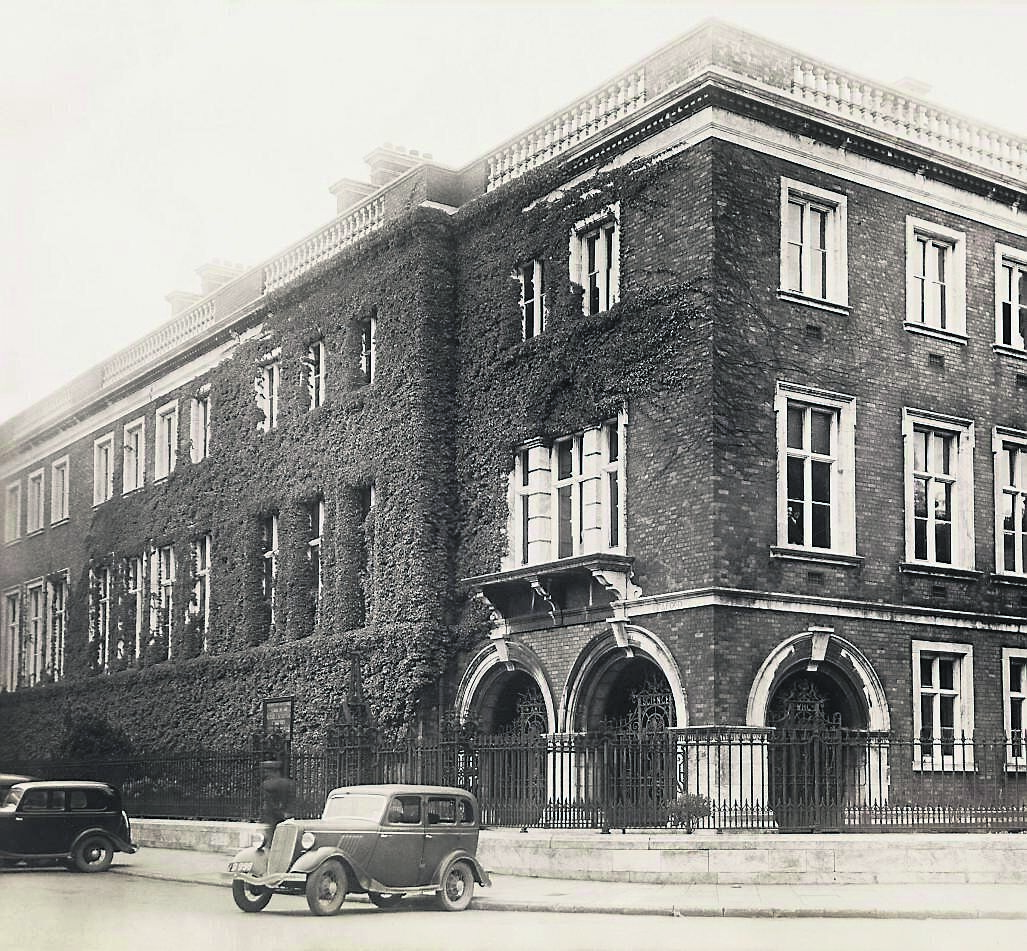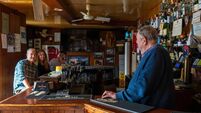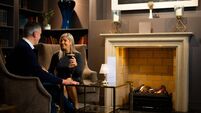300 years of history at Cork city art gallery site

Students of Crawford School of Art in 1893 Picture: Courtesy Crawford Art Gallery, Cork
The Crawford Art Gallery occupies the old Cork Custom House, constructed between 1723 and 1724. At that time, the building was on the fringes of the city centre, and Emmet Place was an open dock called the King’s, or Customhouse, Dock.
Across the dock from the building was Lavitt’s Quay. One can trace the line of the quay wall along the railings around the art gallery. Much later the quay ‘moved’ around the corner to its present location, but we’ll get to that later.
The Custom House was not, however, the first building of this type in Cork, or even the first on this site. There had long been places where arriving captains and merchants could pay their duties and taxes, and in the 13th century, the collection of these was farmed out to Italian businesses originating in Tuscany.
Some time prior to 1690, a modest Custom House was laid out near to the present building. It was a long, narrow structure, probably one or two storeys tall. During the siege of Cork by forces loyal to William III in autumn, 1690, the Catholic defenders siding with James II sent a small detachment to hold the building.
Unfortunately for them, a large force of well-drilled Danish infantry was camped in Shandon, and in the afternoon of September 28, when the tide was low enough, the Danes waded through the mire in the north channel of the Lee to attack the building, killing the officer and some of the men.
They went on to join up with English soldiers attacking from the south and stormed a hole in the city wall that had been created earlier by cannon fire, quickly ending the siege.
The new Custom House and William Maynard
The old building was no doubt damaged during the battle, but was patched up and returned to use.
The customs and excise service not only collected duty on imports of alcohol and precious goods, but demanded payment from distillers and chased bootleggers and poitín-makers, as well as running an intelligence organisation using information collected from ships’ captains. They continued to operate from this building for another 30 years.

In 1717, William Maynard, a well-connected man from Tallow, became the Collector of Customs at Cork. He had an interest in architecture and was, at the beginning of his career at least, a conscientious civil servant.
Maynard lobbied hard for a replacement for the run-down building that was thought an embarrassment to the country’s second city. He wrote to his bosses in Dublin that “ye Custom House of Cork is in a ruinous condition, that ye Walls from ye foundations upward are not only cracked but rotten, that ye Beams are very rotten, & ye roof so bad that they are under daily apprehensions of it falling, & that it is ye opinion of several Workmen who have view’d it, that it cannot be effectively repair’d.”
Co-operating with the local merchants, he persuaded the Government to pay £2,027 for a new building. It is very hard to convert this into modern money, but this is three times as much as the Custom House in Waterford cost.
The architect is unknown, but it is most likely that Maynard himself, aided by competent local workmen, worked out the details.
Decay, Vacancy and Rebirth
As time passed, ships grew larger and the business of collecting customs moved downriver. By 1809, the dock was filled in and Lavitt’s Quay moved around the corner!
In 1814, work was well underway on Cork’s next and last Custom House on Lapp’s Quay. The 1720s building remained in government use as offices for the excise department, but was said to be in an “almost condemned state and shattered condition”.
Eventually, the government moved out and the building fell vacant. At this point, it could have disappeared, like most of Cork’s 18th century buildings, but instead salvation arrived in an unlikely form.
About the time that Cork’s newest Custom House opened, workmen were unpacking an unusual gift from London. This was what we now know as the ‘Canova casts’, after the Italian sculptor Antonio Canova (1757-1822).
Canova had been commissioned to make full sized replicas of some of the greatest works of Western sculpture from the Vatican collection. The originals had been confiscated from Rome by Napoleon, but later returned.
After the British Army and their allies had finally defeated Napoleon, the Pope commissioned these replicas for King George IV. But, like an unsought wedding gift, the king did not have house space for them.
Fortunately, a home was eventually found in Cork, and in 1832 they were installed in the attic of the old Custom House, which also became the home of the owners of the collection, the Royal Cork Institution.
This organisation ran scientific and artistic education in the city, in the absence of any third level body, and although they were frequently in debt, and somewhat ramshackle, they are ancestors of both UCC and MTU.

From the Cork School of Design, 1849, to the Cork Municipal School of Art, 1883
The Cork Institution dabbled in art education, but this was put on a firmer footing with the passing of an Act of Parliament which created a Cork School of Design in 1849.
This is the ancestor of the MTU’s Crawford College of Art & Design, making that the second oldest art school on this island.
The school was originally funded from London, but when Parliament declined to renew the grant, the citizens of Cork agreed to fund it from local taxation, turning it into a municipal school.
Students were taught drawing, pattern design, modelling (sculpture) and life drawing. The school was always under-resourced until one of Cork’s greatest philanthropists, William Horatio Crawford (1812-88) stepped in to assist.
Born of the brewing family, he was enormously rich, but donated a substantial part of his fortune to secular and religious causes, both Protestant and Catholic, before his death.
It was William who paid for the large southern extension to the art school in 1883. The ground floor was always a gallery, but the levels above were originally classrooms.
With the movement of the Cork RTC (MTU’s predecessor) to Bishopstown in the 1970s, the art school relocated to Sharman Crawford Street in 1980 and formal art teaching ended on Emmet Place.
Municipal Art Gallery to Crawford Art Gallery and future plans
Life in the building did not stand still. There had been a small programme of public exhibitions in the school for many decades, and in 1981 the building began its fourth life, as an art gallery.
Originally owned by Cork City Council, it became the Crawford Municipal Art Gallery and in 1984. Peter Murray, its first full-time curator, was appointed. His best achievement was the Millennium Galleries, opened in 2000.
Further changes were to come in 2006 when the gallery joined the Irish Museum of Modern Art and the National Gallery of Ireland as a national cultural institution, allowing it to improve its funding, collection and curation.
As well as being the tercentenary of the building, 2024 is also the year in which further dramatic changes to the site will begin.
Under the present Director, Mary McCarthy, plans were approved in 2023 to substantially extend the building to designs by the Irish firm Grafton Architects.
These will include a multi-storey development at the rear of the old Custom House which will contain galleries, secure areas for storing art, a new café and educational spaces.
The new main entrance will be towards Emmet Place, prioritising the access that William Maynard created 300 years ago, and reorienting the building toward the public square where he once would have looked out at the masts of sailing ships.
The research for this article was supported by the Government of Ireland’s ‘Decade of Centenaries’ fund.
Crawford Art Gallery will hold a series of talks for Heritage Week 2024 from August 17-24. For information, see www.crawfordartgallery.ie







 App?
App?


